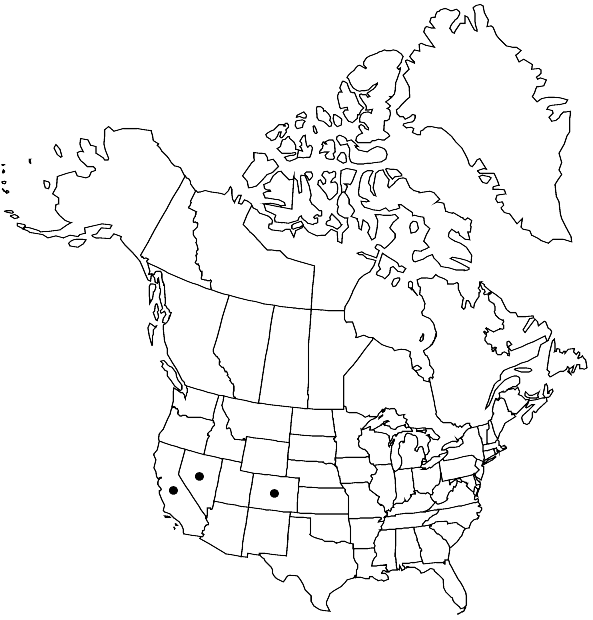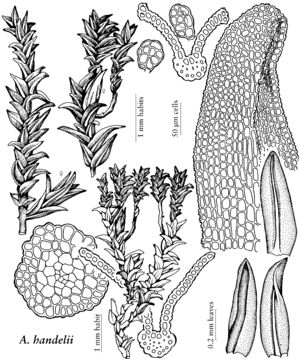Anoectangium handelii
Ann. K. K. Naturhist. Hofmus. 27: 490, figs. 51–59. 1913,.
Leaves dense, hiding the stem, ligulate to short-elliptic or ovate, 0.4–0.5(–0.6) mm; apex broadly acute to rarely rounded, apiculus absent or of one cell; margins often 2-stratose in patches; costa usually ending (1–)3–4 cells before apex. Specialized asexual reproduction by ovate gemmae, sometimes uncommon, occasionally apiculate by a projection, of ca. 8 cells, born on rhizoids in leaf axils. Sporophytes unknown.
Habitat: Fissures in rock, calcareous and noncalcareous sandstone
Elevation: moderate to high elevations (900-1700 m)
Distribution

Calif., Colo., Nev., s Europe, sw, c Asia.
Discussion
Anoectangium handelii is quite similar to Gymnostomum viridulum in habitat, size, general appearance, and production of axillary gemmae (a morphological phenocopy), but is immediately distinguished by its narrow adaxial costal groove. Though apparently rare (California in Inyo County, Colorado in Boulder and Larimer counties, Nevada in Clark County), its small size and similarity to sterile Gymnostomum make A. handelii easy for collectors to pass over. C. C. Heyn and I. Hernnstadt (2004b) provided additional discussion of this curious species.
